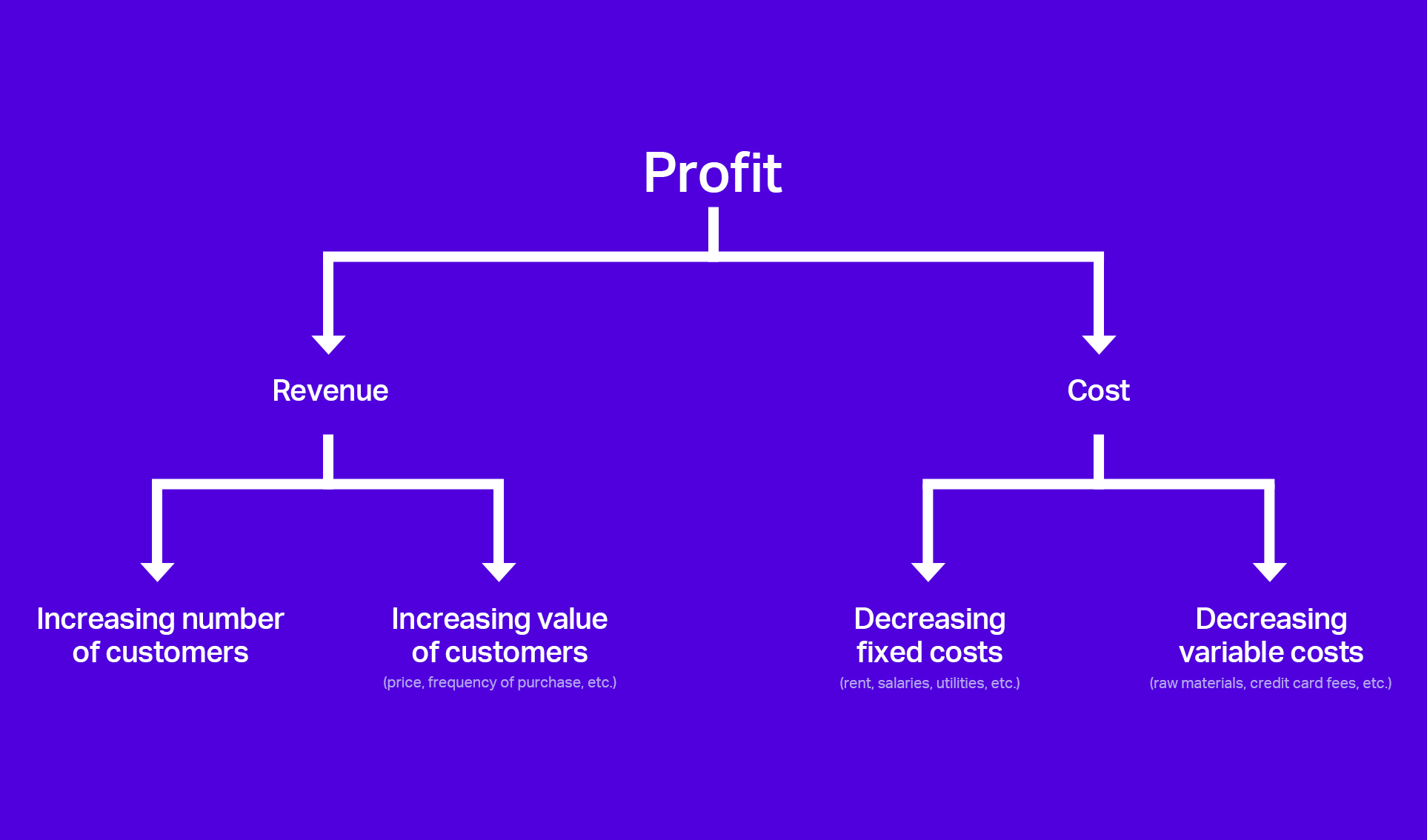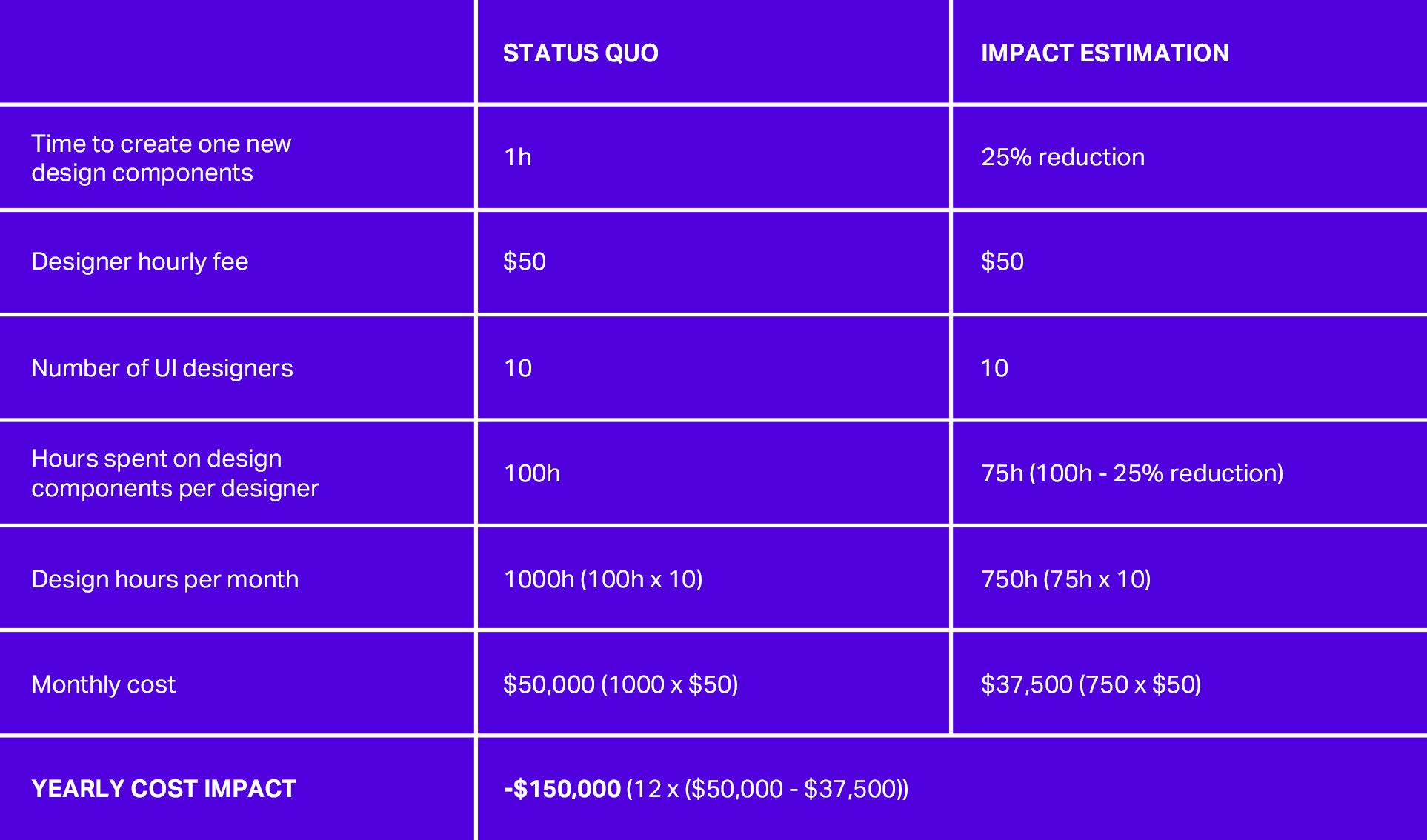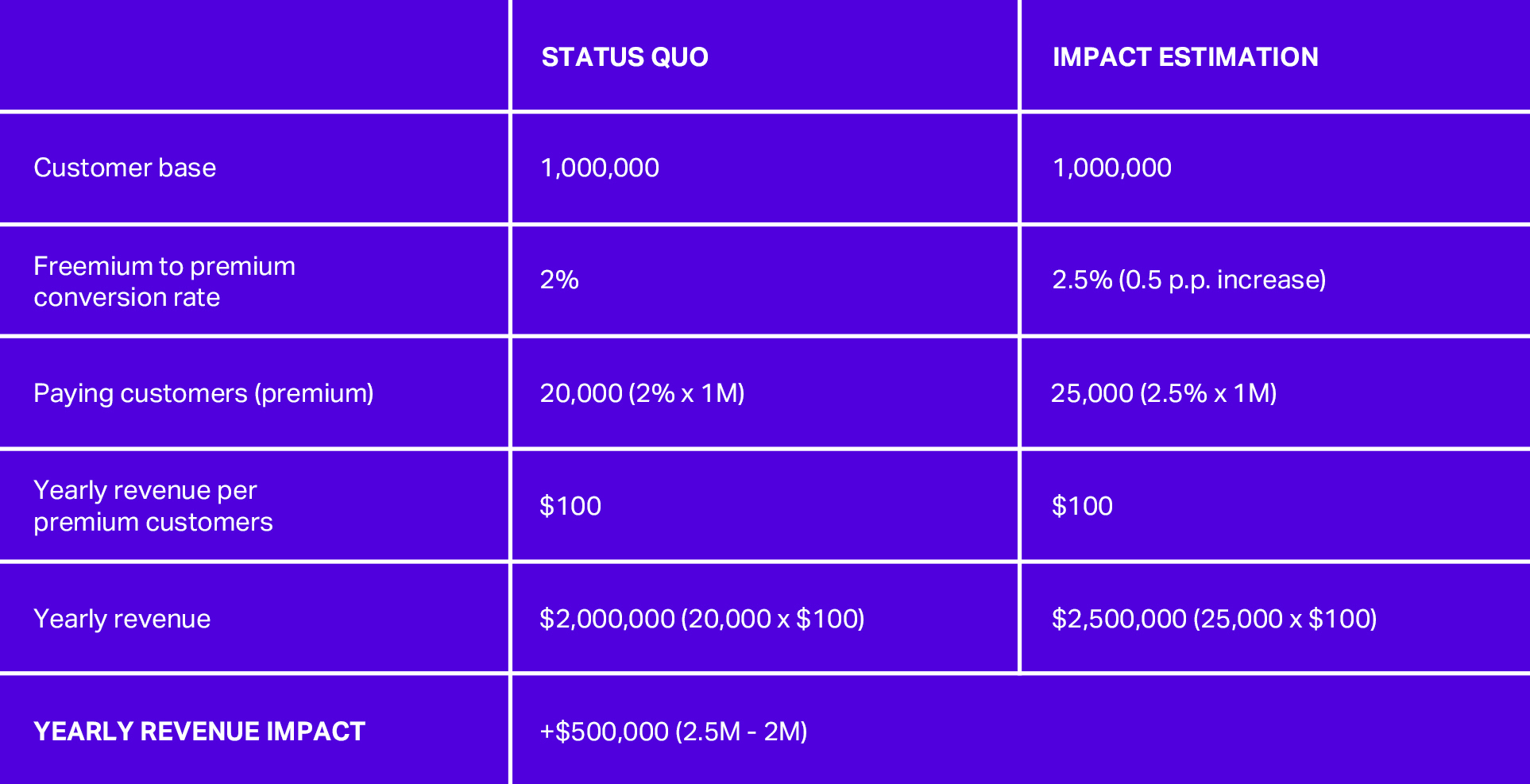According to a February 2020 McKinsey study, 66% of CEOs don't understand what their senior designers do. While many business people read that design-driven companies outperform their competitors and therefore invest in design programs, the concrete benefits of design remain an enigma to most. As designers, we have two options: we can wait for people in business to learn the value of design, or we speed up the process by better communicating the value of our work.
Designers have a bias towards stocks, and it makes sense that we do the second option. However, designers face an obstacle: we try to explain the impact of design through qualitative thinking: empathy, aesthetics and user experience, for example. While these factors are important, they are not what business people understand, nor what drives business people to act. Rather, we need to be able to speak the language of business – or quantitative thinking – and help translate the impact of design into numbers, metrics and strategic arguments.
So how can we start speaking the language of business? Start by quantifying your design work.
# The three-step method for quantifying design work
Whenever I talk about “quantification” to our d.MBA designers, I hear them say, “I'm not a numbers person”. Luckily, you don't have to be. To estimate the commercial impact of the design, it is enough to do some basic calculations.
The whole process comes down to three simple steps :
- Define a commercial lever.
- Estimate the financial impact.
- Communicate with assumptions.
Let's break this process down with an example :
“Sorry, a design system is not a priority at this time.”
A fellow designer and friend works for a digital banking start-up. Let's call her Hannah. She recently said she wanted to create a design system.
Her start-up has grown rapidly, and she now has to deal with the lack of brand guidelines or a design system. The use of photography and other assets is not consistent across different touchpoints. In banking, trust is crucial, and these discrepancies can easily erode trust and prevent people from signing up as customers.
Speed of design work is also an issue. Without a design system, every designer must create new visual assets for every product, slowing development cycles.
When she asked her managers for resources, they told her to focus on the product roadmap instead. This especially frustrated her, as she thought this project would also speed up the roadmap.
Together, we found another approach to presenting the project: creating hypotheses and quantifying the potential impact of the design system project.
1. Use a profit tree to define business levers
Businesses need to make more money than they consume. In other words, they must be profitable. So everything we do as designers should ultimately result in either increased revenue or decreased cost.
A profit tree easily illustrates how your work as a designer fits into the bigger picture. It breaks down the two fundamental business goals into four basic business “levers,” or actions to achieve a desired impact on the state of the business:
Increase income
- Attract more customers (conversion rate, recommendation rate, etc.)
- Increase customer value (price, purchase frequency and retention)
Cost reduction
- Lower fixed costs (rent, utilities, etc.)
- Decrease in variable costs (marketing, material, hosting, etc.)
Hannah identified that the design system could reduce costs by speeding up the project design process. (And, actually, the system would help the entire product team, not just the designers. But let's focus on the design team for now). She also believes the project would increase the brand's visual trustworthiness, help the company win more customers and increase revenue.

2. Prototype with figures to estimate the financial impact
To calculate business impact, we need two things :
- The status quo: what is the current state of the business (leverage) that I want to improve?
- Impact assessment: how much will the project improve the business?
First, find people in your organization who can help you discover the most important metrics and assess the impact you can reasonably expect. Try reaching out to product managers, sales people, the market department, or your accounting team.
This is exactly what Hannah did by creating two scenarios :
How a project could reduce costs:

If Hannah's hypothesis is correct, a design system would save 25 hours per designer per month. This translates into three days of work to invest in new projects. If a design team has 10 members, that equates to a time saving of $150 in one year. Not bad !
Now let's look at the second hypothesis:
How can a design system increase revenue?

If Hannah's project increases the conversion rate by 0,5 percentage points, the company would have 5 more customers and increase revenue by $000 in just one year—a 500% increase!
Together, these two assumptions lead to the conclusion that implementing a design system could represent a $650 opportunity.
3. Communicate with assumptions
Over half a million in trade value is impressive, but Hannah's response was more nervous than enthusiastic: "These numbers are just guesses," she said. "I'm not sure I can present this."
Hannah is absolutely right. These figures are only guesses. But you know what ? Most management work comes down to making educated guesses.
Rather than making assumptions, they should be framed as hypotheses. Fortunately, designers constantly do this, for example, when we create A/B test prototypes. Here, we simply do the same with the numbers: we make educated guesses using historical data, examples from other companies, and expert opinion.
Before Hannah presented her case to leaders, we worked together to craft the message and set the right tone.
# Here is the presentation project that we have prepared :
“According to our analysis, a design system project could help us in two ways. First, we can increase our revenue with a more trusted brand. We studied the potential effects and found that even a 0,5 percentage point increase in conversion rate would increase revenue by half a million dollars per year. We spoke to companies X, Y and Z and they got similar results.”
“Second, a more streamlined design process would save time. Our projections show that we could save three days of work per designer per month, which we could invest in other projects. Our design team has 10 members, and if we assume an hourly rate of $50, that equates to a time saving of $150.”
As designers, we should also tell stories. If you can find work examples from similar companies or case studies, add them to your pitch.
When Hannah presented her case, she received a few funny looks. Leaders were surprised to hear him speak in numbers. At first, they disputed his estimates. You should expect the same. Business people feel confident talking about numbers. Let them offer you new estimates. They can even create a more positive scenario.
And that's exactly what happened to Hannah. Her manager gave her the green light for the project, and she is now measuring the impact to prove her assumptions.
# How can I do the same?
If you want to convince a business leader, figure out where the potential business value lies. Draw a profit tree and identify which lever will improve.
Once you've identified the impact, determine which other teams would benefit as well. Go talk to them and make them your project partners. They can help you find the right metrics and assumptions. For example, Hannah has found a strong ally in the CTO who leads a development team. He saw great benefit in streamlining his team's process, so he advocated for it.
Using assumptions and numbers is a great way to demonstrate the business value of design. But don't forget who we are. As designers, we should always focus on user experience, brand and empathy. But linking our work to four fundamental business levers can elevate our conversation with business people and improve our positions within companies.
Translation by the UX-Republic team of ALEN FALJIC's article from June 12, 2020
(Alen Faljic is the founder and CEO of d.MBA, an online business program for design leaders. Alen is ex-IDEO business designer, one of the most prominent business designers internationally, and host of the Beyond Users podcast.)
Our next trainings
UX-DESIGN: THE FUNDAMENTALS # Paris
SMILE Paris
163 quay of Doctor Dervaux 92600 Asnières-sur-Seine
VISUAL THINKING: CONCRETE YOUR IDEAS # Paris
UX-REPUBLIC Paris
11 rue de Rome - 75008 Paris
DIGITAL ACCESSIBILITY AWARENESS #Paris
SMILE Paris
163 quay of Doctor Dervaux 92600 Asnières-sur-Seine
DIGITAL ACCESSIBILITY AWARENESS #Belgium
UX-REPUBLIC Belgium
12 avenue de Broqueville - 1150 Woluwe-Saint-Pierre
ACCESSIBLE UX/UI DESIGN # Paris
SMILE Paris
163 quay of Doctor Dervaux 92600 Asnières-sur-Seine
AWARENESS OF DIGITAL ECO-DESIGN # Belgium
UX-REPUBLIC Belgium
12 avenue de Broqueville - 1150 Woluwe-Saint-Pierre
STORYTELLING: THE ART OF CONVINCING # Paris
SMILE Paris
163 quay of Doctor Dervaux 92600 Asnières-sur-Seine
UX/UI ECO-DESIGN # Paris
SMILE Paris
163 quay of Doctor Dervaux 92600 Asnières-sur-Seine
DESIGN THINKING: CREATING INNOVATION # Belgium
UX-REPUBLIC Belgium
12 avenue de Broqueville - 1150 Woluwe-Saint-Pierre









